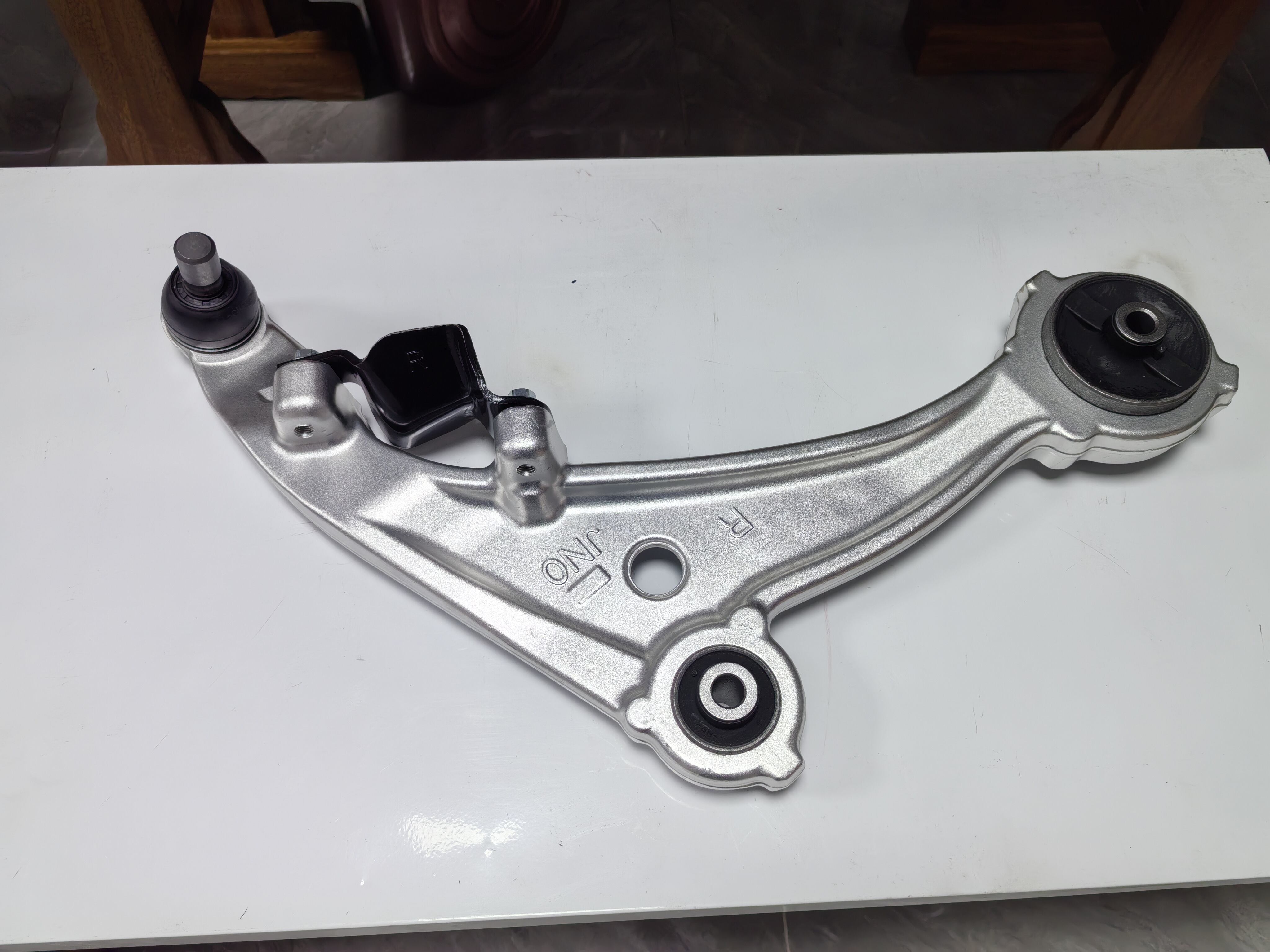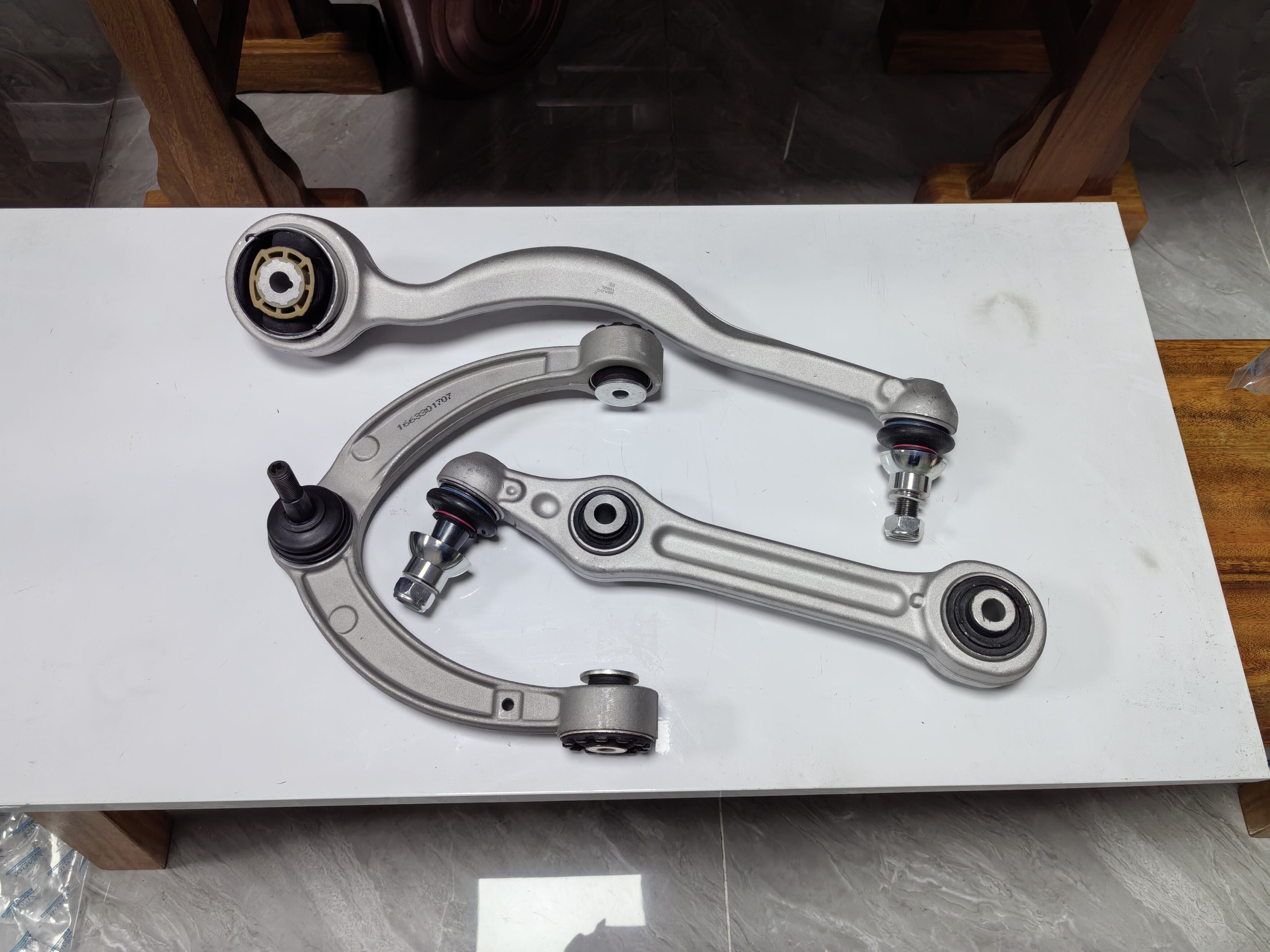Choosing Adjustable Rear Upper Control Arms for ROI
Adjustable rear upper control arms are key components in a vehicle’s suspension system, connecting the rear frame to the axle and helping control wheel alignment. Unlike fixed control arms, which have a set length and angle, adjustable models let you tweak positioning—making them a smart investment for drivers looking to boost performance, reduce maintenance costs, or adapt to vehicle modifications. But how do they deliver a strong return on investment (ROI)? Let’s break down why choosing adjustable rear upper control arms makes financial sense, from longer tire life to better handling.
What Are Adjustable Rear Upper Control Arms?
First, it’s important to understand what upper control arms do. In any suspension system, upper control arms work with lower control arms to keep the wheels aligned correctly as the vehicle moves. They manage angles like camber (the wheel’s tilt inward or outward) and toe (the wheel’s angle toward or away from the vehicle’s center). Proper alignment ensures even tire wear, stable handling, and predictable braking.
Fixed upper control arms are set to factory specifications, which work well for stock vehicles. But when you modify a vehicle—like lifting a truck, lowering a car, or installing larger tires—the factory alignment gets thrown off. This is where adjustable rear upper control arms shine. They have threaded ends or sliding joints that let you adjust length, fine-tuning camber and toe to match the new setup. This adjustability ensures the wheels stay aligned, even after modifications.
How They Boost ROI: Reduced Tire Wear
One of the biggest costs for drivers is replacing tires. Misaligned wheels wear unevenly—for example, excessive camber can make the inside or outside of the tire wear out much faster. A set of tires can cost $500 or more, so extending their life directly improves ROI.
Adjustable rear upper control arms prevent this waste. By letting you set precise camber and toe angles, they ensure the entire tire tread touches the road evenly. For example, a lifted truck with fixed control arms often develops positive camber (wheels tilt outward), wearing the outer edges of the tires. Adjusting the upper control arms to correct this camber can double the tire’s lifespan.
Over time, the savings add up. If a set of tires lasts 30,000 miles with fixed arms but 60,000 miles with adjustable ones, you cut tire replacement costs in half. For drivers who log many miles or use expensive tires (like off-road or performance models), this alone can justify the cost of adjustable upper control arms.
Adapting to Modifications Saves Money
Many vehicle owners modify their cars or trucks—lifting for off-roading, lowering for better handling, or adding larger tires for style or performance. These changes disrupt the factory suspension geometry, and fixed upper control arms can’t compensate. The result? Poor alignment, uneven wear on suspension parts (like bushings and ball joints), and even damage to the axle or frame.
Adjustable rear upper control arms solve this by adapting to the new setup. For example:
- Lifted trucks: Lifting raises the axle relative to the frame, changing camber. Adjustable arms let you reset camber to factory specs, preventing tire wear and strain on the axle.
- Lowered cars: Lowering can cause negative camber (wheels tilt inward). Adjustable arms correct this, ensuring the tires grip properly and avoiding premature wear on suspension bushings.
- Larger tires: Wider or taller tires need more clearance, which may require adjusting toe angles to prevent rubbing. Adjustable arms let you fine-tune toe, avoiding tire damage and improving handling.
Without adjustable upper control arms, you’d either have to live with poor performance and frequent repairs or pay for custom fixed arms every time you modify the vehicle. Adjustable arms are a one-time investment that adapts to multiple changes, saving money in the long run.
Improved Handling Reduces Accident Risks
Poor alignment from mismatched control arms doesn’t just wear tires—it makes the vehicle harder to control. A truck with misaligned rear wheels may drift on the highway, while a lowered car might feel unstable around corners. These issues increase the risk of accidents, which lead to costly repairs, insurance claims, or even medical bills.
Adjustable rear upper control arms improve handling by ensuring proper alignment. With wheels set to the correct angles, the vehicle tracks straight, responds predictably to steering inputs, and brakes evenly. This is especially important for off-road vehicles, where uneven terrain demands precise control, and performance cars, where split-second handling can prevent crashes.

Avoiding even one minor accident—with repair costs as low as $1,000—easily offsets the cost of adjustable upper control arms, which typically range from $200 to $600 per set. For drivers who value safety, this is an ROI that’s hard to put a price on.
Longer Lifespan for Suspension Parts
Misalignment doesn’t just hurt tires—it strains other suspension components. When wheels are at the wrong angle, upper control arms, bushings, ball joints, and even the axle have to work harder. This extra stress causes parts to wear out faster, leading to frequent replacements.
For example, fixed upper control arms on a modified vehicle may pull unevenly on bushings, causing them to crack or tear in 10,000 miles instead of 50,000. Replacing bushings costs $100–$300 per arm, plus labor. Over time, these costs add up.
Adjustable rear upper control arms reduce this strain by keeping alignment correct. When the suspension parts work as designed, they last longer. Bushings, ball joints, and the control arms themselves will reach their full lifespan, cutting down on repair bills. This extended durability is another way adjustable arms deliver ROI—you spend less on parts and labor over the vehicle’s life.
Choosing the Right Adjustable Rear Upper Control Arms
To maximize ROI, not all adjustable upper control arms are equal. Here’s what to look for:
- Material: Steel arms are durable and affordable, making them great for trucks and off-road vehicles. Aluminum arms are lighter, ideal for performance cars where weight matters. Avoid cheap materials like cast iron, which can bend under stress.
- Adjustment range: Look for arms that offer enough range to handle your modifications. For example, a 4-inch lift needs more adjustment than a 2-inch lift. Check the product specs for maximum length change.
- Bushing quality: High-quality bushings (polyurethane or rubber) reduce vibration and last longer. Cheap bushings wear quickly, negating the arm’s benefits.
- Ease of adjustment: Some arms require tools to adjust, while others have quick-release levers. Choose what fits your needs—if you modify your vehicle often, quick adjustments save time.
Spending a bit more on a quality set (like $400 instead of $200) pays off in longer life and better performance, ensuring higher ROI.
When to Skip Adjustable Arms (and When Not To)
Adjustable rear upper control arms aren’t always necessary. If you drive a stock vehicle and never plan to modify it, fixed arms work fine—they’re cheaper and require no setup. But if you do any of the following, adjustable arms are worth the investment:
- Lift or lower your vehicle.
- Install larger tires (taller or wider than factory).
- Notice uneven tire wear despite regular alignments.
- Experience poor handling or drifting.
- Use the vehicle for off-roading, racing, or heavy towing (all of which stress suspension alignment).
For these cases, the savings in tires, repairs, and accident prevention far exceed the cost of adjustable upper control arms.
FAQ
How much do adjustable rear upper control arms cost?
Most sets range from $200 to $600, depending on material (steel vs. aluminum) and brand. High-end models for racing or heavy-duty use can cost $800+, but mid-range options work for most drivers.
Can I install them myself?
If you have basic mechanical skills and tools (wrenches, a torque wrench, alignment tools), yes. But alignment after installation often requires a professional shop to ensure precision. Many drivers install the arms themselves and then pay $100–$200 for a professional alignment.
How long do they last?
Quality adjustable upper control arms can last 100,000 miles or more, as long as bushings are replaced when worn. Steel arms tend to outlast aluminum ones in harsh conditions (like off-roading).
Will they fit any vehicle?
No. They’re designed for specific makes and models (e.g., Ford F-150, Jeep Wrangler). Always check that the arms are compatible with your vehicle before buying.
When will I see ROI?
Most drivers see savings within 1–2 years, through reduced tire replacement costs and fewer suspension repairs. Off-road or high-mileage drivers may see ROI even faster.
Table of Contents
- What Are Adjustable Rear Upper Control Arms?
- How They Boost ROI: Reduced Tire Wear
- Adapting to Modifications Saves Money
- Improved Handling Reduces Accident Risks
- Longer Lifespan for Suspension Parts
- Choosing the Right Adjustable Rear Upper Control Arms
- When to Skip Adjustable Arms (and When Not To)
- FAQ

